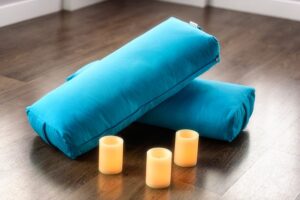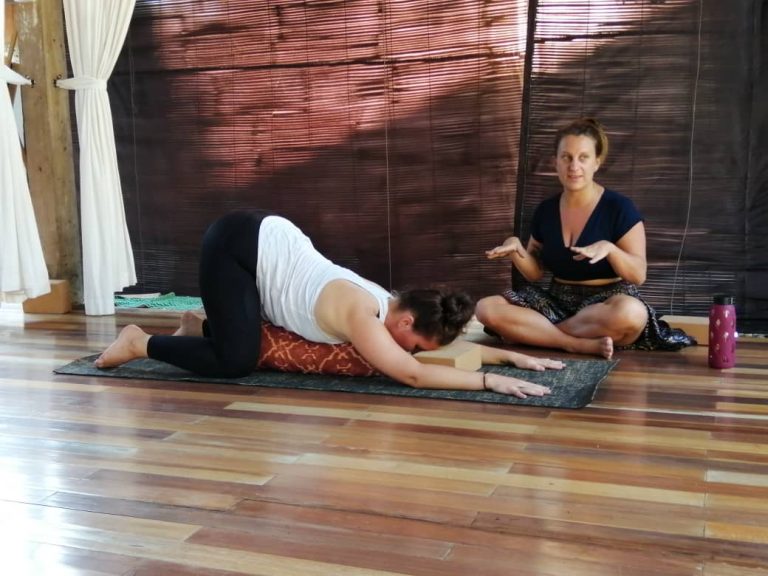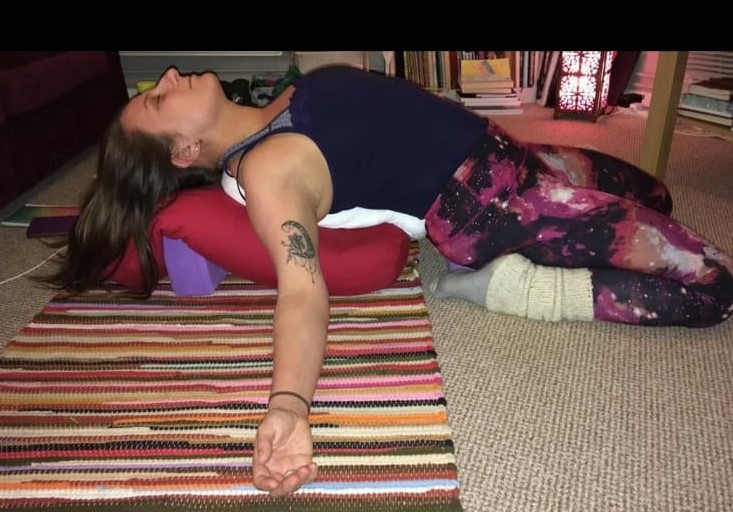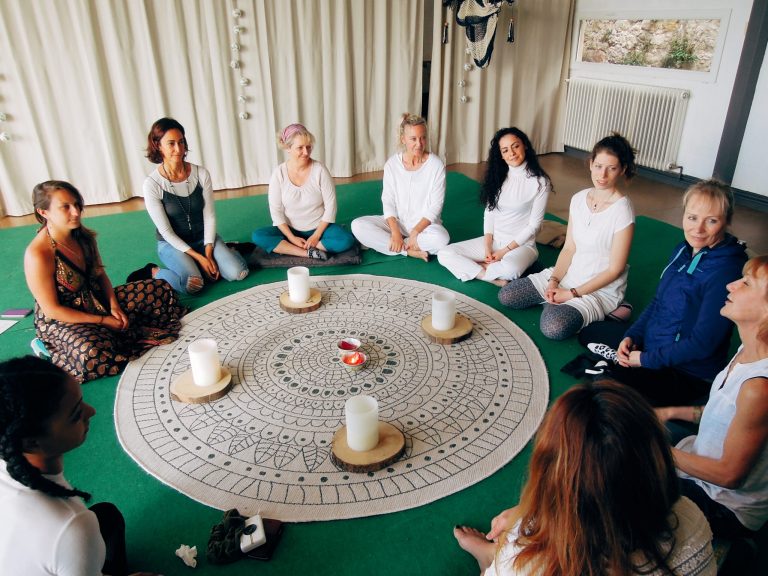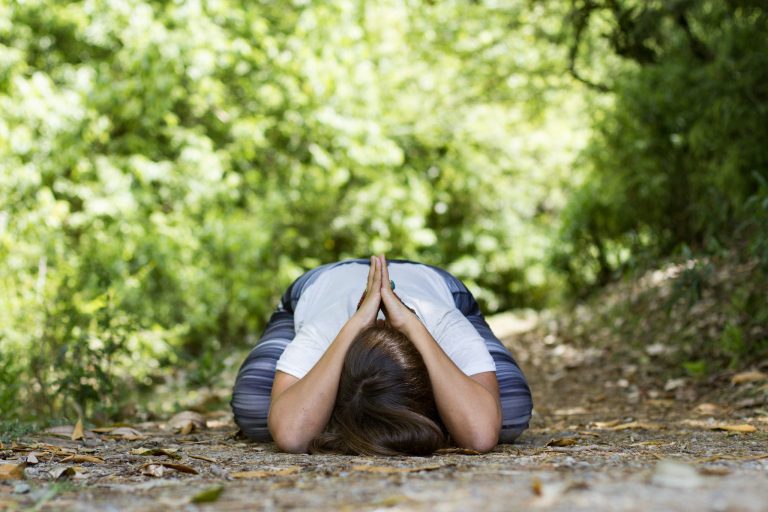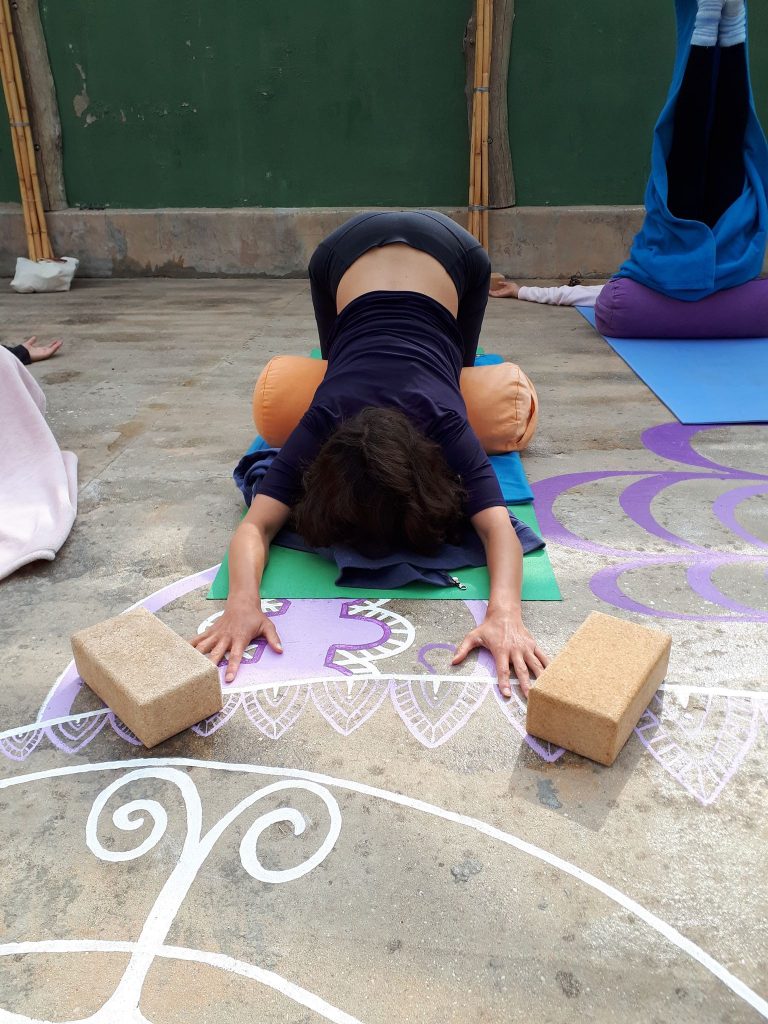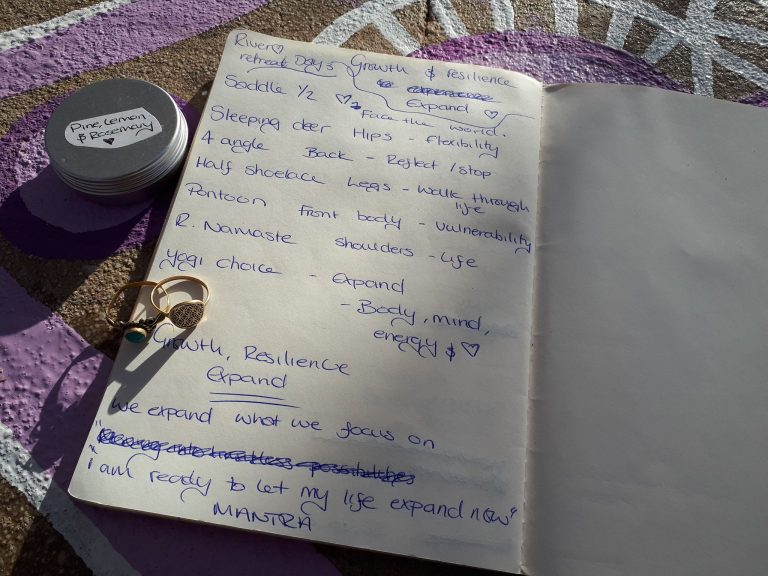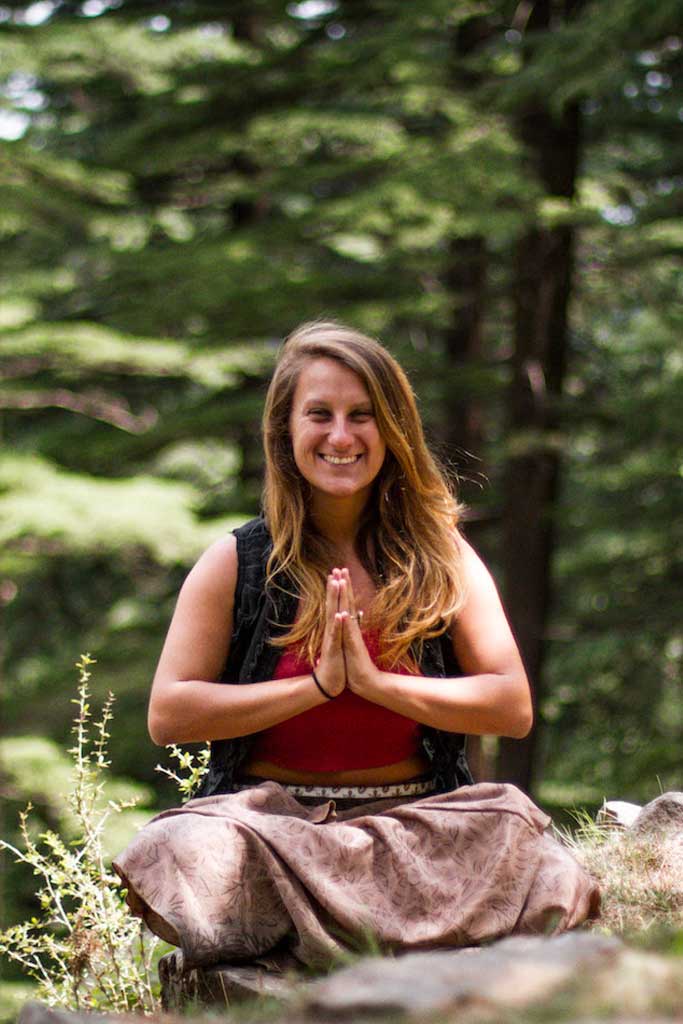How to Use Props and Modifications when Teaching Yin Yoga
Every body is different, and in yin yoga, each practice can be different as well. There is no one definitive way to use props and modifications in yin yoga classes, and it is important that yin yoga teachers understand this. with proper training, yin yoga teachers can learn how to artfully use props and modifications to support their students with mindfulness and care, allowing yin yoga to be accessible and therapeutic to each person and each practice.
Yin yoga is a passive practice. For this reason, the way that we modify and use props in yin yoga is different to the way that we would in a yang class. In yin yoga we are passively encouraging the response and movement of the fascia connective tissue.
In yin yoga we generally spend 3-5 minutes in each posture, and sometimes longer. The more time that we spend in a yin yoga posture, the more time we allow for the fascia to respond, and with this our needs for props and modifications can change. Using props and modifications in yin yoga must be introduced mindfully and consciously, and more as a suggestion to the body rather than a demand.
It is important that students are encouraged and empowered to listen to the subtle messages of their bodies and intuit what they need in that moment. Let students know that they can remove or adjust props to suit their changing needs throughout the time spent in each yin yoga posture. It may be helpful to introduce a prop at the beginning of an asana, and after a few minutes suggest a change. Without this awareness, an unconscious use of props may mean that students are restricting the natural release of fascia.
The kinds of props that are typically used in yin yoga are soft and allow accessibility to the yin yoga postures. Bolsters, blocks and blankets are the most ideal. Sometimes tennis balls are used if the intention is to support myofascial release, however, it is recommended to start soft and gentle. It is not advised to use yoga straps or belts in the yin yoga space as these are restrictive and can initiate muscle contraction and hinder the natural process of fascial release.
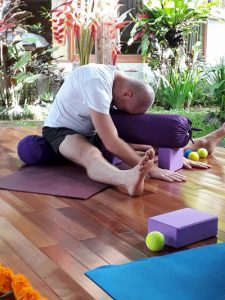 When teaching yin yoga it is important that teachers are observant, mindful and aware of their students at all times. Yin yoga teachers should offer students guidance on how to access yin postures safely and develop an awareness of their own edge of comfort. Modifications using physical adjusts should be used sparsely in yin yoga, and should never be used to push students to go deeper into the posture. Yin yoga is a passive practice and yin yoga teachers can support their students to use time, space, gravity, body weight, mindful propping and their own intuition and awareness to modify and support their practice.
When teaching yin yoga it is important that teachers are observant, mindful and aware of their students at all times. Yin yoga teachers should offer students guidance on how to access yin postures safely and develop an awareness of their own edge of comfort. Modifications using physical adjusts should be used sparsely in yin yoga, and should never be used to push students to go deeper into the posture. Yin yoga is a passive practice and yin yoga teachers can support their students to use time, space, gravity, body weight, mindful propping and their own intuition and awareness to modify and support their practice.
Using props and modifications in yin yoga is an artful skill that can greatly impact on the comfort, accessibility and safety of a students yin yoga experience. It is important that yin yoga teachers practice mindful awareness, committed observance and have the appropriate knowledge of the process of fascial release when teaching yin yoga and offering modifications. With proper training yin yoga teachers can learn the skilful art of using props and modifications and ensure that the yin yoga classes that they offer are accessible, safe and therapeutic to every body, every practice, in every moment.
To dive deeper into this topic and learn more about how to teach yin yoga, Shanti Atma Yoga offers a variety of trainings exploring the many avenues to self-healing, teacher development and deepening your yoga practice
𓆩♡𓆪 To watch some of our free Yin teacher training about how to teach Yin intelligently TAP HERE
Yin Yoga Teacher Training Online:
Yin Yoga Teacher Training: 100 hour Functional Anatomy and Chinese Medicine
Yin Yoga Teacher Training: 100 hour Pranayama, Meditation and Mindfulness
Yin Yoga Teacher Training: 80 hour Yin Yoga and Yoga Nidra
Yin Yoga Teacher Training: 50 hour Neuroplasticity and Mindfulness
Yin Yoga Teacher Training: 50 hour Essential Oils and Emotional Intelligence

